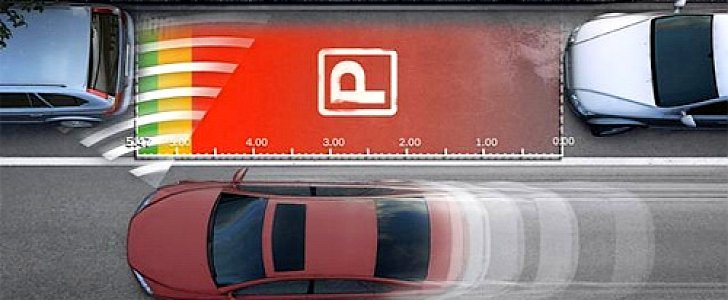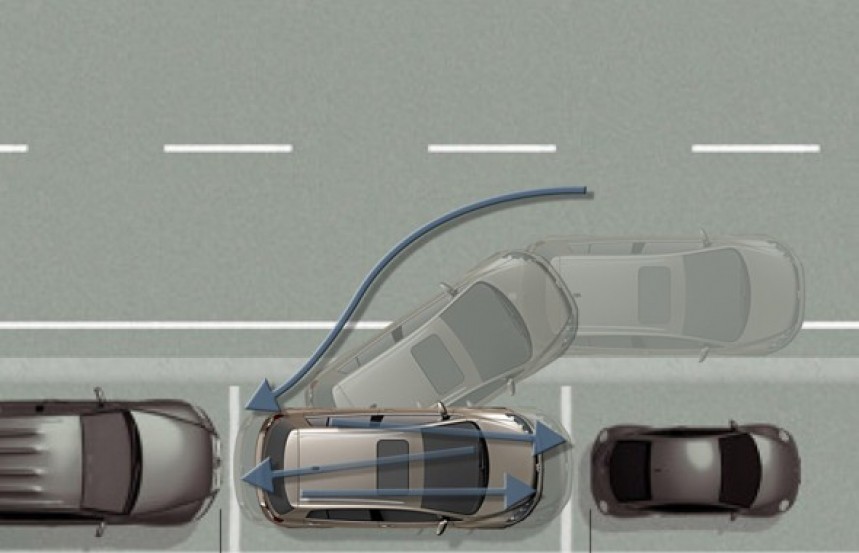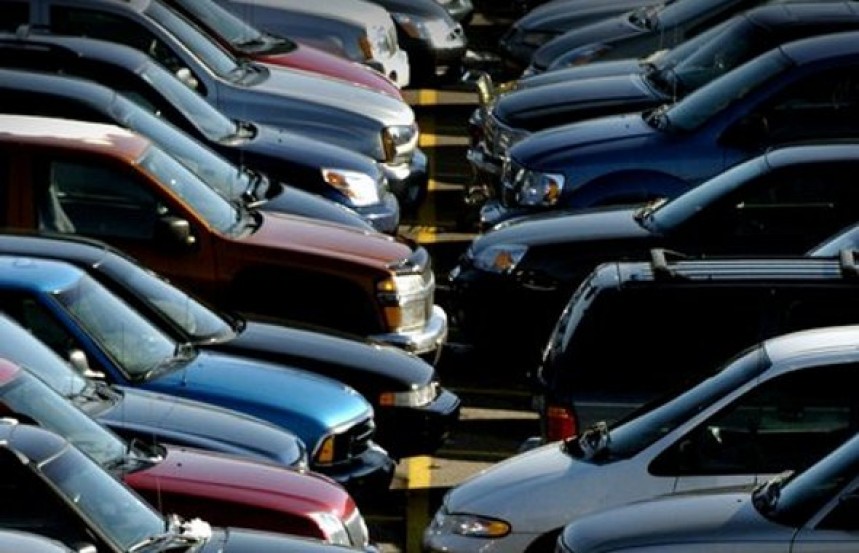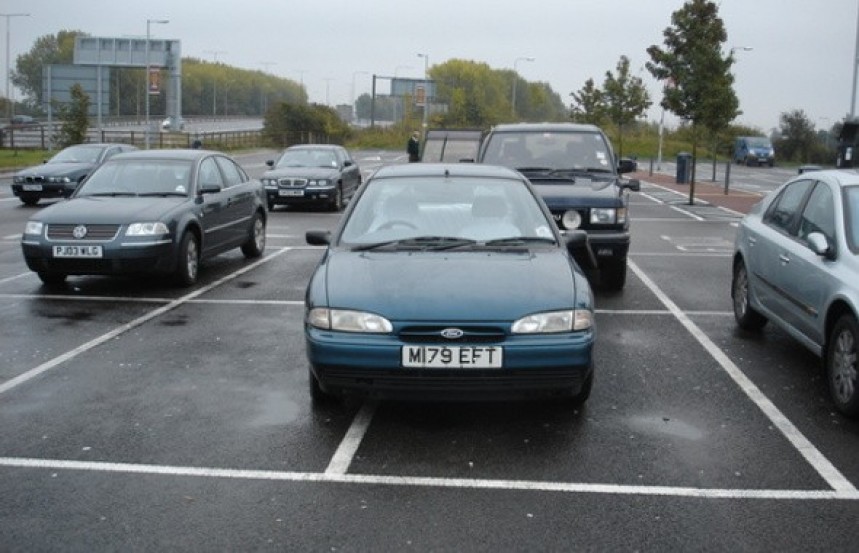We are sure most of you out there who own a driver's license pretty much know how parking works. Yet, we can't help but be amazed at the gazillion YouTube/whatever videos showing more or less experienced drivers having the hardest time trying to get their cars into that not-so-tight spot.
We know from experience parking skills are acquired in small packages, so to speak. None of us have any idea how to park a car immediately after THE EXAM and in the first months that follow. In time, as we get accustomed to how to operate a vehicle, parking becomes easier for most and somewhat of a second nature for a few. The following guide is intended for those who are not there yet...
The first thing one needs to park perfectly is a car. The second is, of course, an empty spot of land, big enough to accommodate your ride. Sounds simple on paper, but let's take it one step at a time.
As said, to be able to park, one must first find a parking spot large enough for the car to fit it. Makes sense, right? Well, not for all of us if we are to judge by the many cars parked in the most unnatural positions we see on the roads every day. So, keep in mind to always make sure the spot is bigger than your car.
Given the crowded world we live in, we can't really give any advice as to where you may find such a proper parking space. Depending on where you spend your days, you may waste more time trying to find an empty parking space than you did coming home from work. Keep in mind, though, there is no law saying this place must be within a few seconds of your front door. Humans were intended for walking, so it won't kill you to use your feet for a few minutes. So, leave your car in a safe place, even if that safe place is some distance away from your home.
Once the spot is located, it's time to move to the nasty job of actually parking. No matter where you are in this world, there are two types of parking spots available: parallel and reverse. We will treat them separately.
Parallel parking is one of the most used methods of storing a car when not in use, if you'll allow that expression. As such, it's a maneuver that needs to be performed during driver's examination procedures in most countries on this Earth. And trust us, it is a lot easier than it looks. And it all starts with, you guessed, finding the proper place.
Finding a big enough spot where to parallel park is also easier than it looks. There is no need to get out of the car and tape-measure the location, you can do it a lot easier. Just position the car parallel to that empty slot so that the front end of your car is right behind the rear end of the car parked in front and to the side. Make sure the rear of your car is clear of the car behind you. If all is right, then that's the spot for you.
And now, it's time to park. Drive forward and stop parallel to the car behind which you will eventually end up. Make sure to leave about 3 feet (one meter) of clearance between your car and the other. For parallel parking to work, the two cars need to be at least nose-to-nose when the maneuver begins.
Engage the emergency lights to warn incoming motorists you're a lucky winner of an empty parking spot and you're about to claim your prize. Put your vehicle in reverse and begin the maneuver, slowly. Keep the direction of the car straight until the rear end of the other vehicle appears in the corner of your back side window. Once that happens, turn the wheel fully to the right (full-left for right-hand drive countries).
Keep the car steered so until the rear end of the other vehicle aligns with the side mirror of your car. While still moving, turn the wheel in the opposite direction. It's also the time when you should start paying attention to the nose of your car and make sure it clears the back end of the other one.
If all looks right, slowly straighten the steering wheel. If you feel the car is not properly aligned, you may move forward and backward a few times, making sure to steer in the appropriate direction while doing so.
There are some things to keep in mind, though, when it comes to parallel parking. Most of the time, it's done amidst ongoing traffic. This means you have to make sure there is no car behind you. If you perform the maneuver on a two-lane road, make sure the other lane is free as well. Make sure to put your emergency lights on so the ones behind are aware of your intentions.
Don't do this at high speeds. However easy, parallel parking requires some level of skill, and you won't be able to correctly appreciate when to turn what at higher speeds. Also, make sure to keep the speed constant throughout the maneuver.
From time to time, it may take some time to park, and that could make other motorists impatient and aggressive. Don't lose your temper. Either let them pass if you have no choice or continue your maneuver without getting all worked up about it.
When parking, try to leave enough room for the ones behind and in front to leave the parking lot. If you feel there's no way your car can fit into a spot, then you're right. Don't go about trying to squeeze in or push other cars out of the way.
Another way to park your car is reverse. This is most common in parking lots, and to some people, it's a lot easier than parallel parking. Also, finding a spot to perform this maneuver is probably easier, and it is easier to appreciate if a car can fit into a spot. The trick is to find a parking spot wide enough to allow you to open the doors once the maneuver is completed. Usually, leaving at least 50 cm (1.6 feet) of clearance on both sides of the car should ensure a successful and injury-free exit.
This type of maneuver requires fewer moves on your part. As we said above, you need to find a place big enough to allow you to open the doors without hitting other cars, as well as leave room for other drivers to get into and out of their vehicles.
Once you find the spot, make sure you position the car so that the rear of your car fits equally between the two flanking vehicles. As usually, you will need to perform the maneuver diagonally, the starting position will find the steering wheel turned halfway to the left or right. Once you begin rearing into the spot, slowly turn the wheel in its idle position. You should begin doing this as soon as the rear end of your car has entered the space between the two other vehicles.
You may wonder why you should go through all this trouble, when you can simply choose the easy way out and stick the car into the spot front-first. The answer is simple. As the front wheels are the ones doing all the steering, parking backwards gives you a lot more options when exiting the parking spot. Parking front first will limit these options, as the two flanking cars will prevent you from turning the wheel in due time.
To make things easier, this type of parking spot is usually marked with white or yellow lines and, contrary to what some of you may think, the car goes in between the two lines.
Obeying the markings allows more cars to fit into the parking lot, and we are sure you hate it too when someone occupies two spots by parking on top of the lines.
No matter the method you choose for parking, at one point, you will definitely hit the car in front or behind you, or a pole, or do something you did not plan on doing. The funny part is that most of these minor parking fender-bender mishaps do not take place while parking, but when you leave the parking lot, so pay attention while doing that, too.
When it happens to you, don't panic. The damages you can cause to other cars are minor, so there's no need to get all worked up about it. If the owner of the other vehicle is around, go to them and proceed to deal with the accident according to the laws of the country you live in.
If there is no driver around, make sure you leave them a note with your phone number, so they can contact you and do the necessary paperwork. There's no shame in admitting blame. As you, too, would hate finding your car all scratched up and have no one to blame for it.
The first thing one needs to park perfectly is a car. The second is, of course, an empty spot of land, big enough to accommodate your ride. Sounds simple on paper, but let's take it one step at a time.
As said, to be able to park, one must first find a parking spot large enough for the car to fit it. Makes sense, right? Well, not for all of us if we are to judge by the many cars parked in the most unnatural positions we see on the roads every day. So, keep in mind to always make sure the spot is bigger than your car.
Given the crowded world we live in, we can't really give any advice as to where you may find such a proper parking space. Depending on where you spend your days, you may waste more time trying to find an empty parking space than you did coming home from work. Keep in mind, though, there is no law saying this place must be within a few seconds of your front door. Humans were intended for walking, so it won't kill you to use your feet for a few minutes. So, leave your car in a safe place, even if that safe place is some distance away from your home.
Parallel parking is one of the most used methods of storing a car when not in use, if you'll allow that expression. As such, it's a maneuver that needs to be performed during driver's examination procedures in most countries on this Earth. And trust us, it is a lot easier than it looks. And it all starts with, you guessed, finding the proper place.
Finding a big enough spot where to parallel park is also easier than it looks. There is no need to get out of the car and tape-measure the location, you can do it a lot easier. Just position the car parallel to that empty slot so that the front end of your car is right behind the rear end of the car parked in front and to the side. Make sure the rear of your car is clear of the car behind you. If all is right, then that's the spot for you.
And now, it's time to park. Drive forward and stop parallel to the car behind which you will eventually end up. Make sure to leave about 3 feet (one meter) of clearance between your car and the other. For parallel parking to work, the two cars need to be at least nose-to-nose when the maneuver begins.
Keep the car steered so until the rear end of the other vehicle aligns with the side mirror of your car. While still moving, turn the wheel in the opposite direction. It's also the time when you should start paying attention to the nose of your car and make sure it clears the back end of the other one.
If all looks right, slowly straighten the steering wheel. If you feel the car is not properly aligned, you may move forward and backward a few times, making sure to steer in the appropriate direction while doing so.
There are some things to keep in mind, though, when it comes to parallel parking. Most of the time, it's done amidst ongoing traffic. This means you have to make sure there is no car behind you. If you perform the maneuver on a two-lane road, make sure the other lane is free as well. Make sure to put your emergency lights on so the ones behind are aware of your intentions.
From time to time, it may take some time to park, and that could make other motorists impatient and aggressive. Don't lose your temper. Either let them pass if you have no choice or continue your maneuver without getting all worked up about it.
When parking, try to leave enough room for the ones behind and in front to leave the parking lot. If you feel there's no way your car can fit into a spot, then you're right. Don't go about trying to squeeze in or push other cars out of the way.
Another way to park your car is reverse. This is most common in parking lots, and to some people, it's a lot easier than parallel parking. Also, finding a spot to perform this maneuver is probably easier, and it is easier to appreciate if a car can fit into a spot. The trick is to find a parking spot wide enough to allow you to open the doors once the maneuver is completed. Usually, leaving at least 50 cm (1.6 feet) of clearance on both sides of the car should ensure a successful and injury-free exit.
Once you find the spot, make sure you position the car so that the rear of your car fits equally between the two flanking vehicles. As usually, you will need to perform the maneuver diagonally, the starting position will find the steering wheel turned halfway to the left or right. Once you begin rearing into the spot, slowly turn the wheel in its idle position. You should begin doing this as soon as the rear end of your car has entered the space between the two other vehicles.
You may wonder why you should go through all this trouble, when you can simply choose the easy way out and stick the car into the spot front-first. The answer is simple. As the front wheels are the ones doing all the steering, parking backwards gives you a lot more options when exiting the parking spot. Parking front first will limit these options, as the two flanking cars will prevent you from turning the wheel in due time.
To make things easier, this type of parking spot is usually marked with white or yellow lines and, contrary to what some of you may think, the car goes in between the two lines.
No matter the method you choose for parking, at one point, you will definitely hit the car in front or behind you, or a pole, or do something you did not plan on doing. The funny part is that most of these minor parking fender-bender mishaps do not take place while parking, but when you leave the parking lot, so pay attention while doing that, too.
When it happens to you, don't panic. The damages you can cause to other cars are minor, so there's no need to get all worked up about it. If the owner of the other vehicle is around, go to them and proceed to deal with the accident according to the laws of the country you live in.
If there is no driver around, make sure you leave them a note with your phone number, so they can contact you and do the necessary paperwork. There's no shame in admitting blame. As you, too, would hate finding your car all scratched up and have no one to blame for it.












